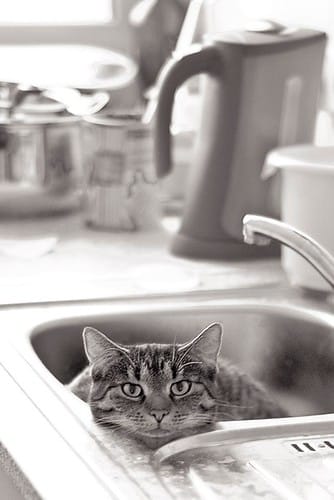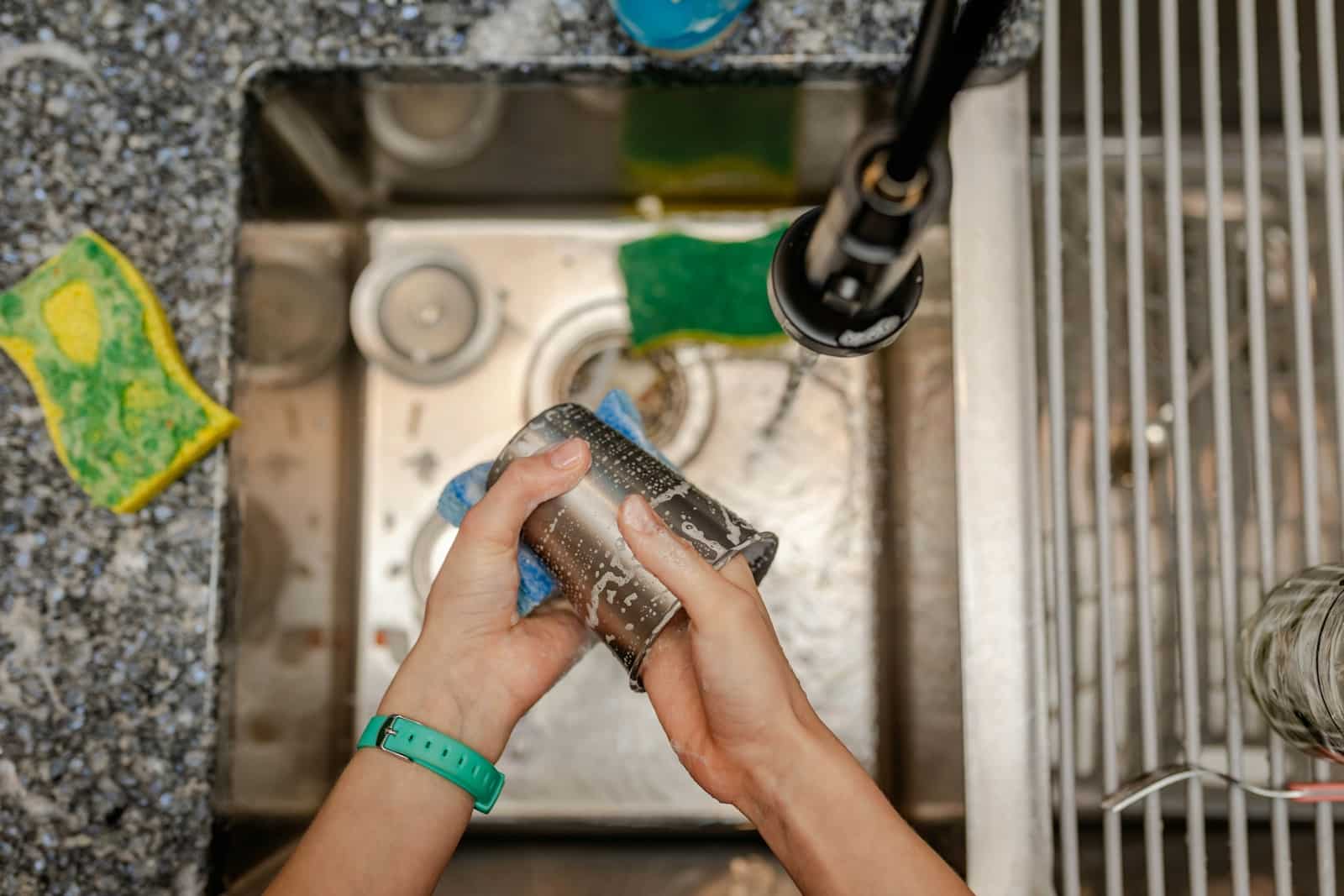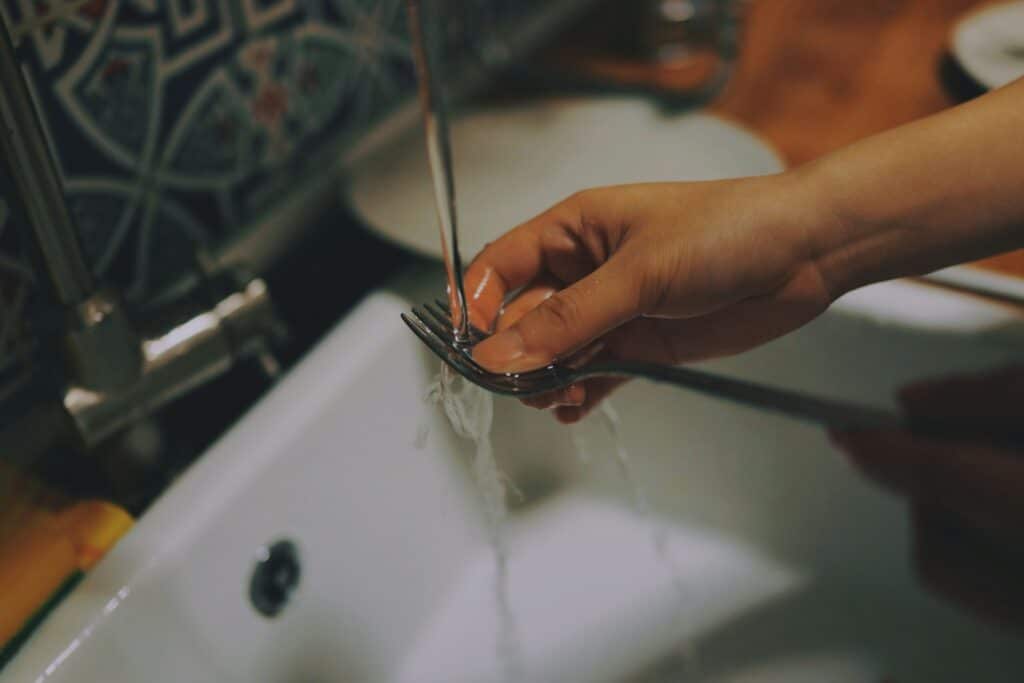How does a garbage disposal work?
The familiar hum of a garbage disposal unit might be one of the most satisfying sounds in the kitchen. With the flip of a switch, food scraps disappear down the drain, transforming what could have been messy kitchen waste into something your plumbing system can handle. Most homeowners know what a garbage disposal is, but have you ever wondered what actually happens to those food particles once they vanish from sight?
Understanding how your garbage disposal works can help you use it more effectively, maintain it properly, and avoid costly plumbing repairs. This kitchen appliance, found in millions of homes across America, operates on surprisingly simple principles while performing a complex task. From the grinding chamber to the drain pipe, every component plays a crucial role in breaking down food waste into manageable pieces.
Whether you’re considering garbage disposal installation or simply want to better understand the unit already humming beneath your kitchen sink, this comprehensive guide will walk you through everything you need to know about how garbage disposals function, their impact on wastewater treatment, and the best practices for keeping yours running smoothly for years to come.
The Basic Components of a Garbage Disposal Unit
A garbage disposal consists of several key components working together to transform food scraps into tiny particles that can safely flow through your plumbing system. At the heart of the disposal unit lies the grinding chamber, a cylindrical space where all the action happens.
The motor powers the entire operation, typically ranging from 1/3 to 1 horsepower in residential units. Connected to the motor is the motor shaft, which rotates at high speeds to drive the grinding mechanism. Unlike what many people believe, garbage disposals don’t actually use sharp blades to cut food. Instead, they rely on a shredder ring (also called a shredding ring or grind ring) mounted on the walls of the grinding chamber.
The grinding process begins when centrifugal force pushes food waste against this stationary shredder ring. Small impellers attached to the rotating plate help move food particles around the grinding chamber, ensuring thorough processing. As the motor powers the system, these components work together to break down solid wastes into particles small enough to pass through your home’s plumbing system.
Water plays a crucial role in this process. Running water helps flush the ground particles through the waste line and into your drain pipe, eventually making their way to wastewater treatment plants or your septic tank. The entire mechanism is designed to handle typical household waste while protecting your plumbing from clogs and backups.
Understanding the Grinding Process
The grinding process inside a garbage disposal is more sophisticated than simply chopping up food scraps. When you turn on the disposal and feed food waste into the grinding chamber, centrifugal force becomes the primary mechanism for breaking down materials.
As the motor shaft spins the rotating plate at high speeds—typically around 1,725 RPM—any food particles in the chamber get pushed outward against the shredder ring. This stationary grinding surface contains numerous small holes, and the combination of force and friction gradually breaks down the food waste into smaller pieces that can pass through these openings.
The impellers, which are not sharp blades but rather blunt arms extending from the rotating plate, help move food around the grinding chamber. This ensures that all waste gets processed evenly rather than getting stuck in one area. Cold water running during this process serves multiple purposes: it helps solidify any grease or fat (making it easier to grind), flushes the ground particles through the system, and keeps the motor from overheating.
This grinding action continues until the food particles are small enough—typically 2mm or less—to pass through the holes in the shredder ring. Once they do, running water carries these tiny pieces through the waste line, down the drain pipe, and into your home’s plumbing system where they eventually reach wastewater treatment plants for further processing.

“Ria in the kitchen sink” by sunside is licensed under CC BY-NC-ND 2.0
Two Main Types of Garbage Disposal Models
Garbage disposers come in two main types, each designed for different usage patterns and safety preferences. Understanding these differences can help you choose the right model for your kitchen and household needs.
Continuous Feed Models
Continuous feed models are the most common type found in American homes. These units operate with a simple wall switch, allowing you to turn the disposal on and off while continuously adding food scraps through the sink drain opening. This design offers convenience and speed, making it easy to dispose of food waste as you cook or clean up after meals.
The continuous feed design works well for busy kitchens where multiple people might be working at the same time. You can scrape plates directly into the disposal while it runs, and the grinding process happens immediately. However, this convenience comes with some safety considerations, as the grinding chamber remains accessible while the unit operates.
Batch Feed Models
Batch feed models operate differently, requiring you to load food waste into the grinding chamber before starting the unit. These disposals don’t use a wall switch. Instead, they activate when you insert and turn a special stopper or cover that comes with the unit. This design prevents the disposal from operating unless the drain opening is completely covered.
While batch feed models require more planning—you must collect food scraps before processing them all at once—they offer enhanced safety features. The covered design prevents accidental contact with the grinding mechanism and reduces the risk of objects falling into the disposal while it operates. Many families with young children prefer this type for its added safety measures.

Photo by Brett_Hondow on Pixabay
Proper Usage and What You Should Never Put Down Your Disposal
Understanding proper usage is essential for maintaining your garbage disposal and preventing damage to your plumbing system. While these units can handle many types of food waste, they’re not designed to process everything that comes out of your kitchen.
Safe Items for Your Disposal
Most soft food scraps work well in garbage disposals. Vegetable peelings, fruit scraps (excluding pits), small bones from fish or chicken, cooked pasta, rice, and bread products typically grind up effectively. Ice cubes can actually help clean and sharpen the grinding surfaces while running cold water helps the entire process.
Citrus peels can freshen your disposal, though they should be used in moderation. Small amounts of most organic food waste will process without problems, as long as you run plenty of cold water during and after grinding.
Items to Avoid
Several categories of waste can damage your disposal or create plumbing problems. Never put grease, oil, or fat down your disposal, as these substances can solidify in your pipes and create serious clogs. Even though the disposal might seem to handle them initially, they cause problems downstream in your plumbing system.
Fibrous foods like corn husks, celery stalks, onion skins, and artichoke leaves can wrap around the grinding mechanism and jam the motor. Large amounts of starchy foods such as potato peels can create a thick paste that clogs your pipes.
Hard items present another category of problems. Fruit pits, large bones, seafood shells, and non food items can damage the shredder ring or jam the motor. These materials are simply too tough for most residential disposal units to handle effectively.
Coffee grounds, while they might seem harmless, can accumulate in pipes and create clogs over time. Similarly, eggshells, despite common myths about them sharpening blades, can create a sandy sediment that interferes with the grinding process.
The Role of Water in Disposal Operation
Water serves multiple critical functions in garbage disposal operation, making it one of the most important aspects of proper use. Always run cold water before turning on your disposal, keep it running throughout the grinding process, and continue running it for several seconds after turning off the unit.
Cold water is specifically recommended over hot water for several important reasons. It helps solidify any fats or grease that might enter the disposal, making them easier to grind and less likely to coat your pipes. Cold water also prevents the motor from overheating during extended grinding sessions.
The water flow creates a flushing action that carries ground food particles through the waste line and prevents them from settling in your pipes. Without adequate water flow, even properly ground particles can accumulate and create clogs downstream from your disposal.
Running water after shutting off the disposal ensures that all particles get flushed completely through the system. This final flush is crucial for preventing food residue from remaining in your pipes, where it could cause foul odors or attract pests.
Environmental Impact and Waste Management
Garbage disposals play an interesting role in household waste management and environmental impact. When food waste goes down a disposal, it doesn’t simply disappear—it enters the wastewater treatment process, which has both benefits and drawbacks for environmental sustainability.
At wastewater treatment plants, the organic matter from ground food waste can contribute to methane gas production during the treatment process. Some facilities capture this methane for energy production, turning food waste into a renewable energy source. This can be more environmentally friendly than sending food scraps to landfills, where they might produce methane gas without capture systems.
However, adding food waste to the wastewater stream increases the load on treatment plants, requiring more energy and resources to process. Some municipalities discourage or even prohibit garbage disposal use because their treatment facilities aren’t designed to handle the additional organic load.
For homes with septic tank systems, garbage disposals require extra consideration. The additional organic matter can overwhelm septic systems that aren’t properly sized or maintained, potentially leading to system failure and environmental contamination.
Many environmental experts now recommend composting as a more sustainable alternative to both garbage disposals and traditional trash disposal for food waste. Composting keeps organic matter out of both the waste stream and wastewater system while creating valuable soil amendment.
Installation and Maintenance Considerations
Garbage disposal installation requires careful attention to both plumbing connections and electrical requirements. Most units connect to a standard 120-volt electrical outlet, though some larger models may require dedicated circuits. The disposal mounts directly beneath your kitchen sink, connecting to the sink drain and your home’s waste line.
Proper installation ensures that your disposal unit operates efficiently and safely. The mounting assembly must be secure to prevent vibration and noise, while all plumbing connections need to be watertight to prevent leaks. Many homeowners choose professional installation to ensure proper electrical and plumbing connections.
Regular maintenance helps prevent clogs and extends the life of your disposal. Run it regularly to prevent rust and corrosion, even if you don’t have food waste to process. Grinding ice cubes occasionally can help clean the grinding surfaces, while citrus peels can freshen the unit.
If your disposal runs but doesn’t seem to be grinding effectively, check for jammed impellers by turning off the power and using an Allen wrench in the bottom of the unit to manually rotate the grinding mechanism. Many disposal problems can be resolved with simple troubleshooting before calling for professional service.
Signs that your disposal needs attention include unusual noises, slow drainage, persistent odors, or frequent resets of the unit’s overload protection. Addressing these issues promptly can prevent more serious problems with your disposal or plumbing system.
Products and Brands for Cleaning and Maintaining Your Garbage Disposal
Proper maintenance of your garbage disposal is essential for keeping it running efficiently and odor-free. Below is a list of a few top products to help you clean and maintain your garbage disposal effectively:
Glisten Disposer Care Freshener and Cleaner
Glisten Disposer Care provides a powerful cleaning solution that removes odors and buildup, leaving your disposal fresh and efficient.
Affresh Garbage Disposal Cleaner
Affresh makes cleaning simple with their foaming tablets, breaking down grime and tackling odors effectively.
This specialized brush is designed to clean the interior of your garbage disposal, including hard-to-reach areas.
Powered by citric extracts, Lemi Shine not only cleans but also deodorizes with a fresh scent, providing eco-friendly cleaning.
Plink Garbage Disposal Freshener and Cleaner
These quick-dissolve capsules clean and leave your disposal smelling great with minimal effort.
Septic-Safe Baking Soda and Vinegar Kits
For a natural cleaning option, look for brands offering SEPTIC SAFE products. Read about what ingredients to stay away from here.
CLR Garbage Disposal Foaming Cleaner
This heavy-duty cleaner from CLR foams on contact to break down grease and stubborn food waste inside your disposal.
Regular use of these highly-rated products will ensure your garbage disposal performs optimally while reducing odors and grime buildup. Always follow manufacturer guidelines for best results!
When to Call Professional Plumbers Like G.A. Eberly Plumbing & Heating
While many garbage disposal issues can be resolved with basic troubleshooting, some situations require professional plumbing expertise. Persistent clogs that don’t clear with normal use, electrical problems, mounting issues, or leaks around the disposal unit all warrant professional attention.
If your disposal unit frequently trips its reset button or circuit breaker, this could indicate electrical problems or motor issues that require professional diagnosis. Similarly, if water leaks from the disposal mounting or connections, professional repair prevents water damage and ensures proper sealing.
Unusual grinding sounds, especially metal-on-metal noises, might indicate damaged grinding components that need professional replacement. Attempting to repair these issues without proper knowledge can damage the unit further or create safety hazards.

Making the Most of Your Kitchen Appliance | How Does A Garbage Disposal Work?
Understanding how your garbage disposal works empowers you to use it effectively while avoiding costly repairs and plumbing problems. This remarkable kitchen appliance transforms food scraps through mechanical grinding rather than cutting, relying on centrifugal force and water flow to break down waste into manageable particles.
Remember that proper use involves running cold water, avoiding problematic foods, and regular maintenance to keep your disposal functioning smoothly. Whether you choose continuous feed models for convenience or batch feed models for safety, following manufacturer guidelines and best practices ensures years of reliable operation.
Your garbage disposal represents just one component of your home’s plumbing system, working in harmony with your pipes, drains, and wastewater treatment infrastructure. By understanding this connection and using your disposal responsibly, you contribute to both household efficiency and environmental stewardship.
For complex issues or professional installation, don’t hesitate to contact experienced plumbing contractors who can ensure your disposal operates safely and effectively within your home’s plumbing system.



